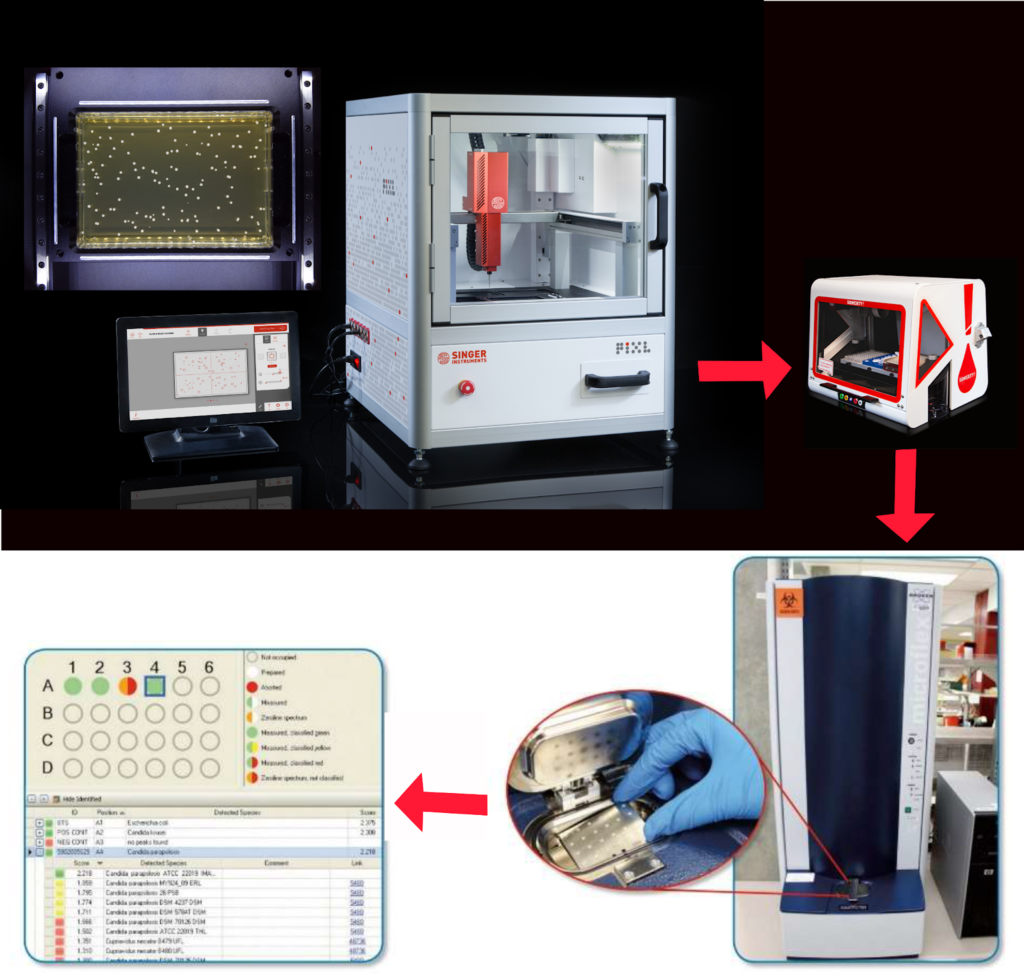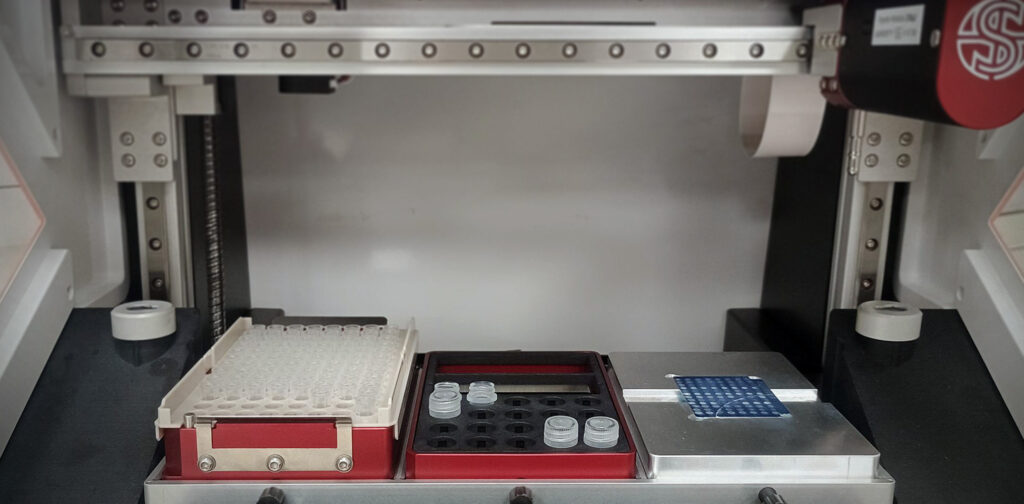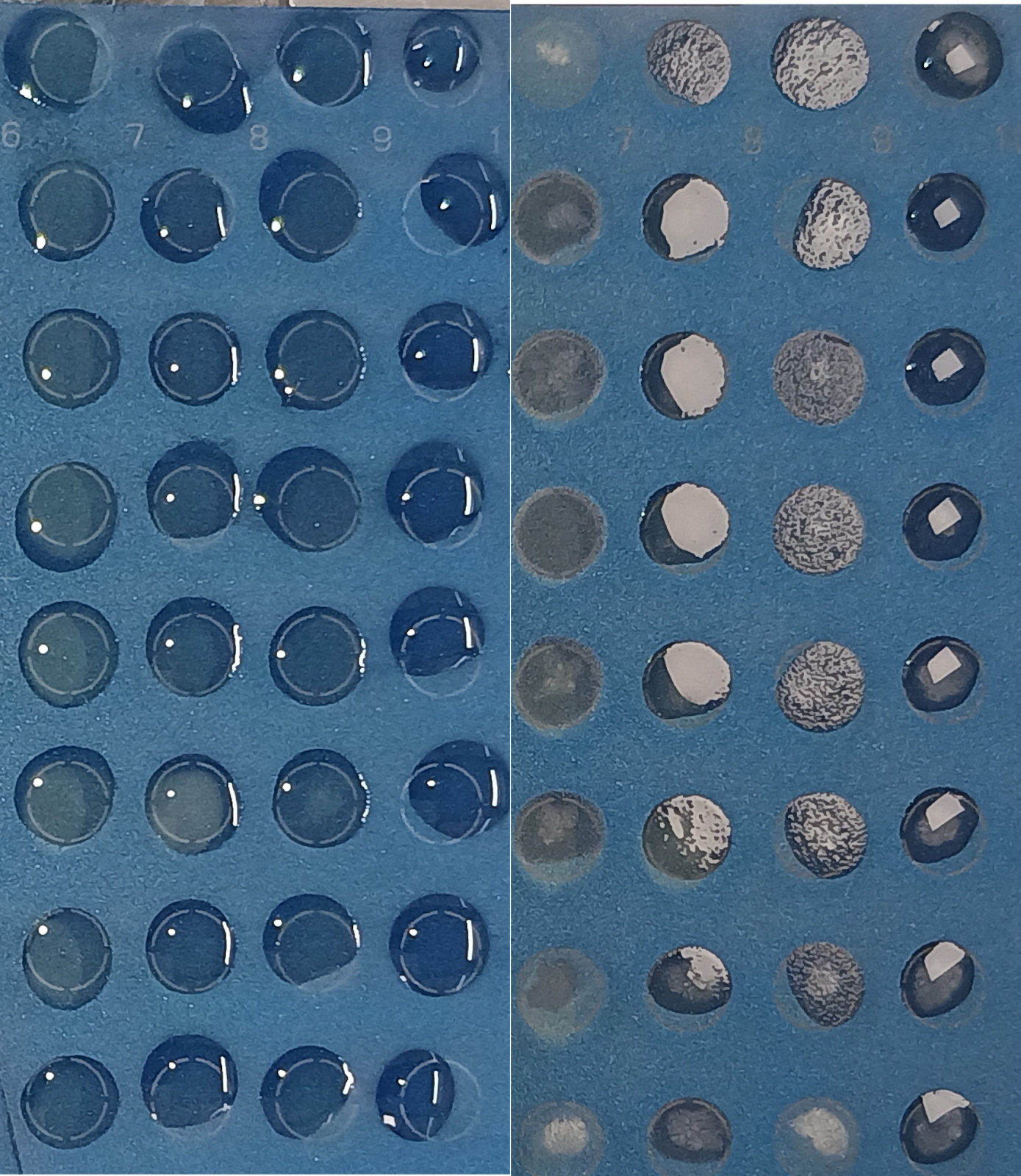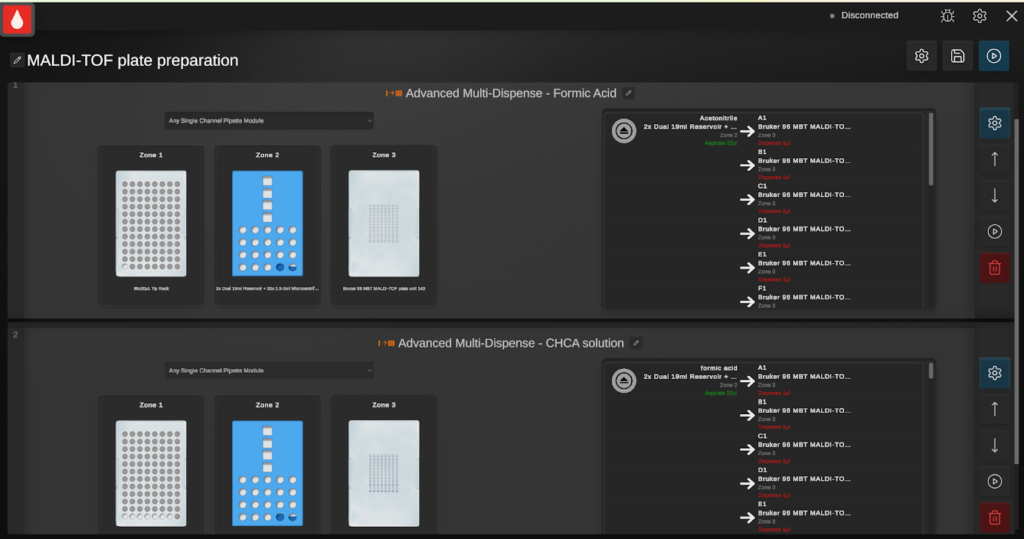A benchtop solution for end-to-end automation of MALDI-TOF target plate preparation for bacterial identification
Introduction
Matrix-Assisted Laser Desorption/Ionization Time-of-Flight (MALDI-TOF) mass spectrometry is a critical tool for microbial identification. However, manual preparation of MALDI-TOF target plates is labour-intensive and prone to variability.
This report investigates the efficiency of using a SQWERTY liquid handling system to automate the formic acid and matrix handling steps of MALDI-TOF plate preparation.
In a direct comparison with manual transfer methods, the use of PIXL to automate transfer of colony material to Shimadzu MALDI-TOF target plates has previously been shown to achieve 99.9% species identification confidence against the SARAMIS database across diverse organisms, along with fewer contaminants.
Combining PIXL with SQWERTY to automate both the colony transfer and liquid handling steps therefore provides a potential benchtop solution for achieving efficient end-to-end automation of MALDI-TOF plate preparation.

Results
The efficiency of SQWERTY for liquid handling was systematically assessed.
SQWERTY was used to dispense precise volumes of 1 μL of 85% formic acid and CHCA matrix solution onto the MALDI-TOF target plates. Although volumetric accuracy is subject to variations influenced by multiple factors (Guan et. al., 2023), SQWERTY demonstrated a 2.3% error rate when dispensing 10 μL of water. This level of precision compares favourably to manual pipetting techniques, which exhibited error rates of 5.7% when performed by an experienced user and 8% when performed by multiple users under comparable conditions, as documented by Lippi et al. (2016). A visual comparison of liquid droplet distribution, presented in Figure 2, reveals that the droplet sizes resulting from manual and automated liquid transfers onto a 96 MBT plate are visibly similar, suggesting a comparable level of volumetric accuracy.

SQWERTY demonstrated a positional error of ±0.125 mm, resulting in highly consistent and precisely aligned liquid deposition onto the target plates. Figure 3 illustrates the improved positional accuracy achieved by the SQWERTY compared to manual pipetting, showcasing the formation of clean, straight arrays of liquid depositions.
SQWERTY completed the 96-position liquid dispensing process within a timeframe of 6 to 7 minutes, which is comparable to the time required for manual pipetting.

Conclusion
SQWERTY provides a reliable and consistent alternative to manual pipetting for the loading of formic acid and matrix solution as part of MALDI-TOF microbial identification workflows. Observations indicated at least comparable volumetric and positional accuracy, with the additional benefits of enhanced reproducibility and walkaway time.
SQWERTY therefore provides a relatively affordable and efficient benchtop solution for labs wishing to automate the liquid handling steps of MALDI-TOF plate preparation that, together with a PIXL colony picker, could be used to achieve end-to-end automation MALDI-TOF plate preparation.
Method
1) Colony transfer with PIXL
A standard petri dish containing bacterial colonies was placed into the PIXL automated colony picking system, and the random colony picking workflow, pre-programmed within the PIXL software, was subsequently initiated. This resulted in the precise transfer of individual bacterial colonies from the petri dish onto a Bruker 96 MBT MALDI-TOF adapter plate.
2) Automated matrix application with SQWERTY
Following the colony transfer performed by PIXL, the Bruker 96 MBT MALDI-TOF adapter plate was removed from the PIXL system and transferred to the SQWERTY liquid handling system. The SQWERTY system was then configured with the necessary reagents, specifically 85% formic acid and CHCA matrix solution (10 mg/mL in 70% acetonitrile/30% water). The pre-defined MALDI-TOF workflow for the Bruker 96 MBT adapter plate, as depicted in Figure 4, was initiated via the SQWERTY software.

The SQWERTY workflow consisted of the following sequential steps:
- The SQWERTY system dispensed 1 μL of 85% formic acid to each designated position on the MALDI-TOF adapter plate.
- An air-drying or user-defined evaporation period was implemented to facilitate the evaporation of the formic acid.
- Following the evaporation period, the SQWERTY system dispensed 1 μL of CHCA matrix solution (10 mg/mL in 70% acetonitrile/30% water) to each designated position on the MALDI-TOF adapter plate.
- A crystallisation period was allowed to facilitate the formation of CHCA crystals onto the bacterial samples.
Following automated preparation by PIXL and SQWERTY, the MALDI-TOF target plates were ready for analysis by a Bruker MALDI-TOF mass spectrometer.
Need a bespoke MALDI-TOF automation solution?
Our product experts will collaborate with you to design a system tailored to your specific needs.

Fiona Kemm MRes | Scientist
Fiona is a vital member of our Research team, rigorously testing our robots to ensure scientists don’t break them. With no prior robotics experience, she was the ideal guinea pig for our world-class user experience and support. Holding a BSc in Biochemistry and an MRes in Molecular Microbiology, Fiona brings extensive hands-on expertise she applies across departments, supporting both users and internal teams. From writing insightful web articles to specialising in SQWERTY, Fiona ensures our innovations perform flawlessly, helping customers focus on the creative and interpretive aspects of science that can’t be automated.